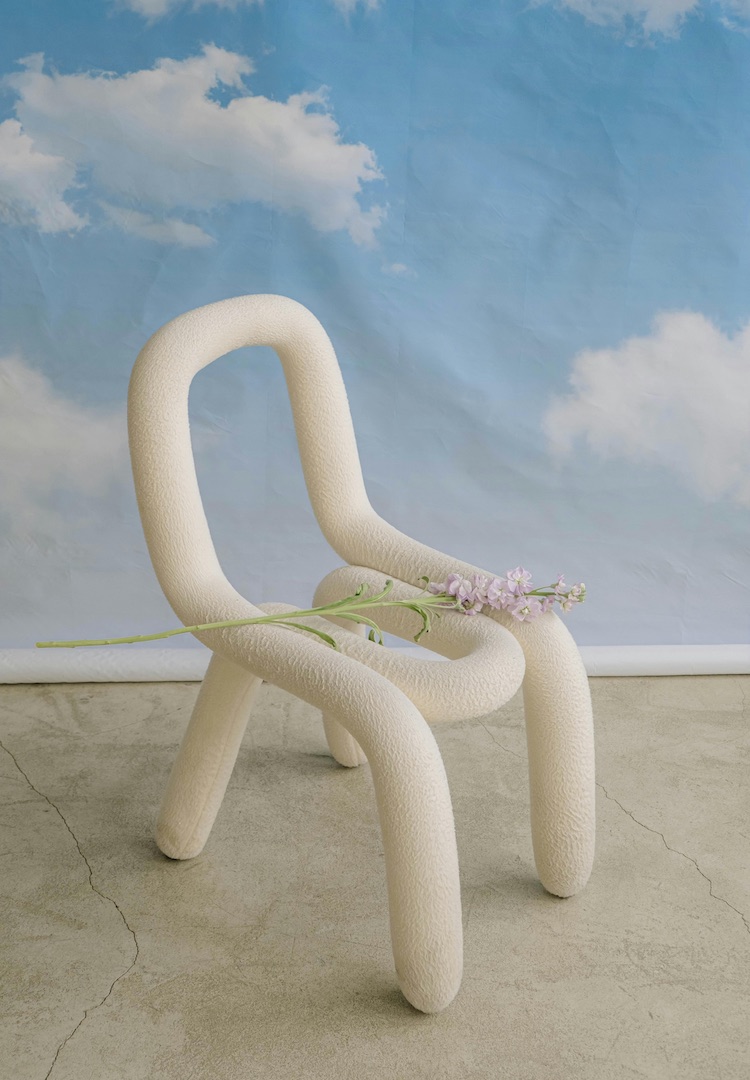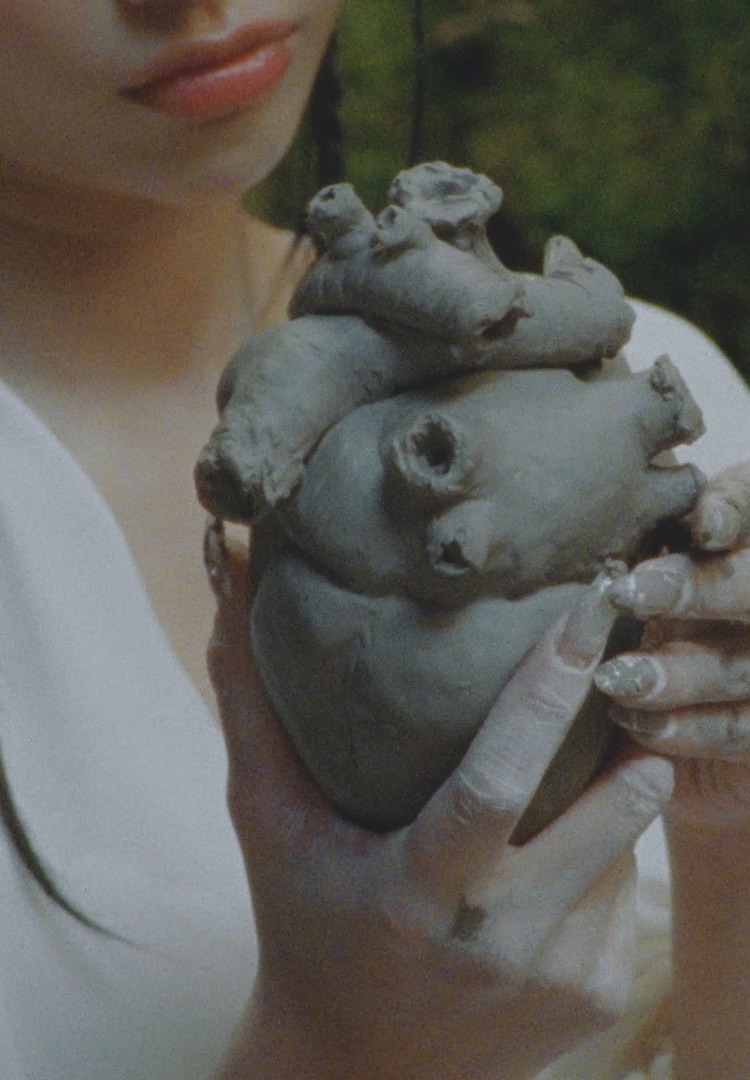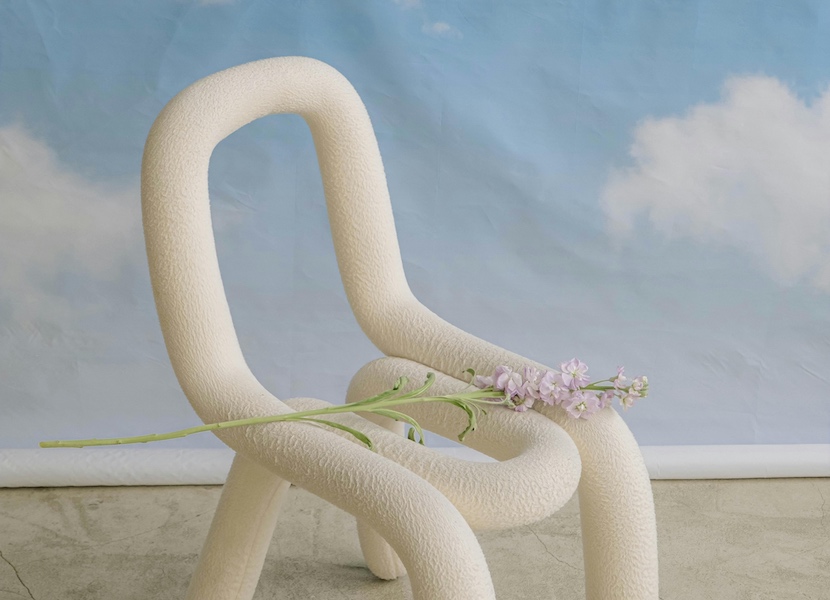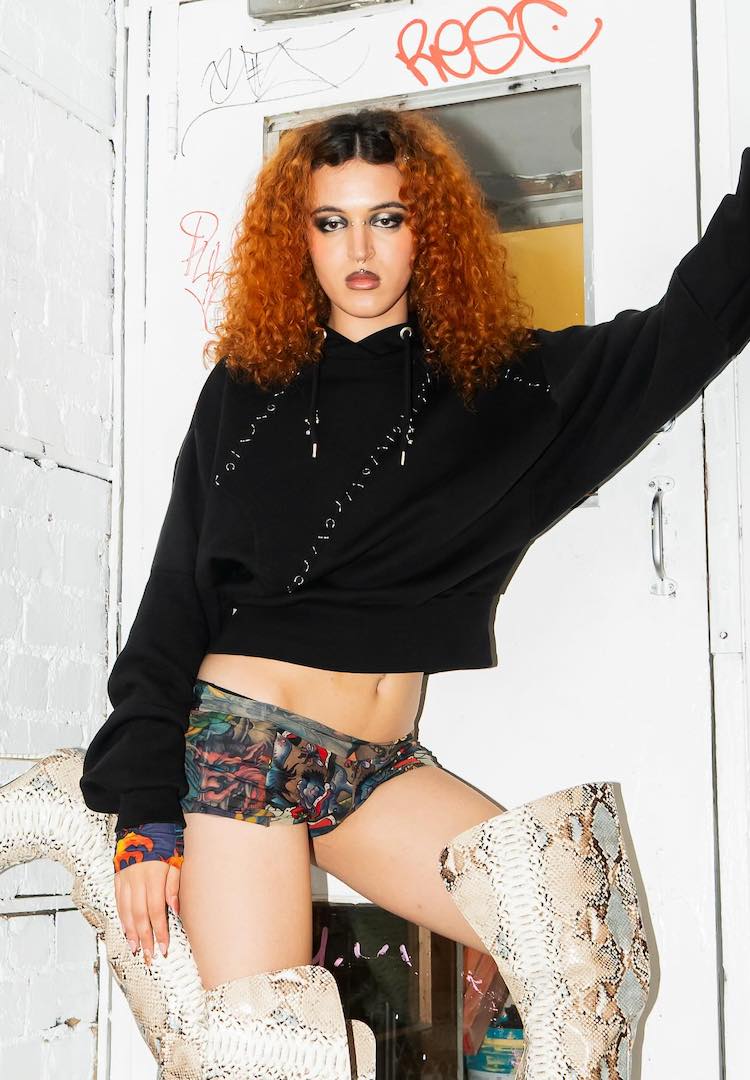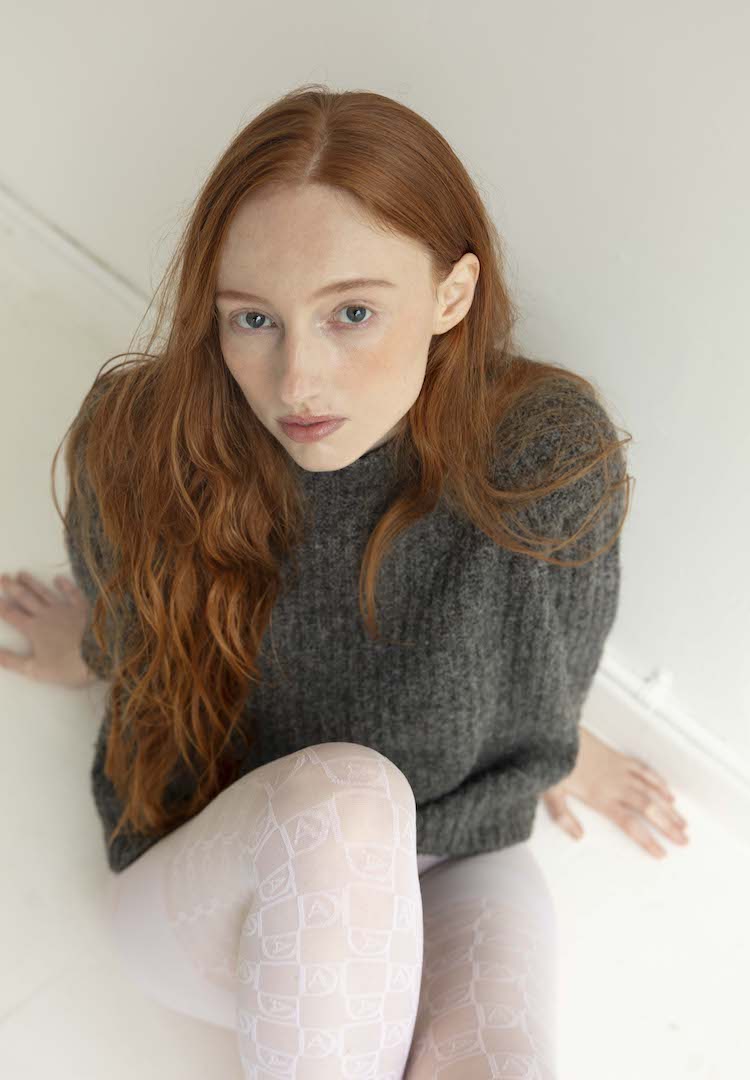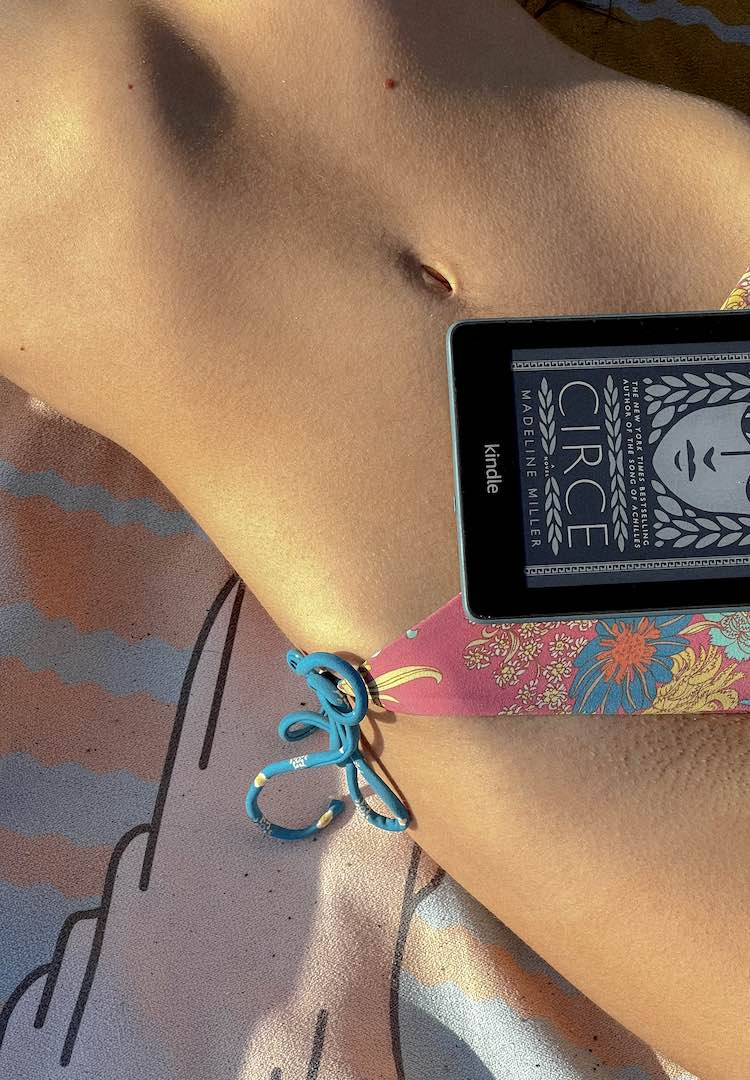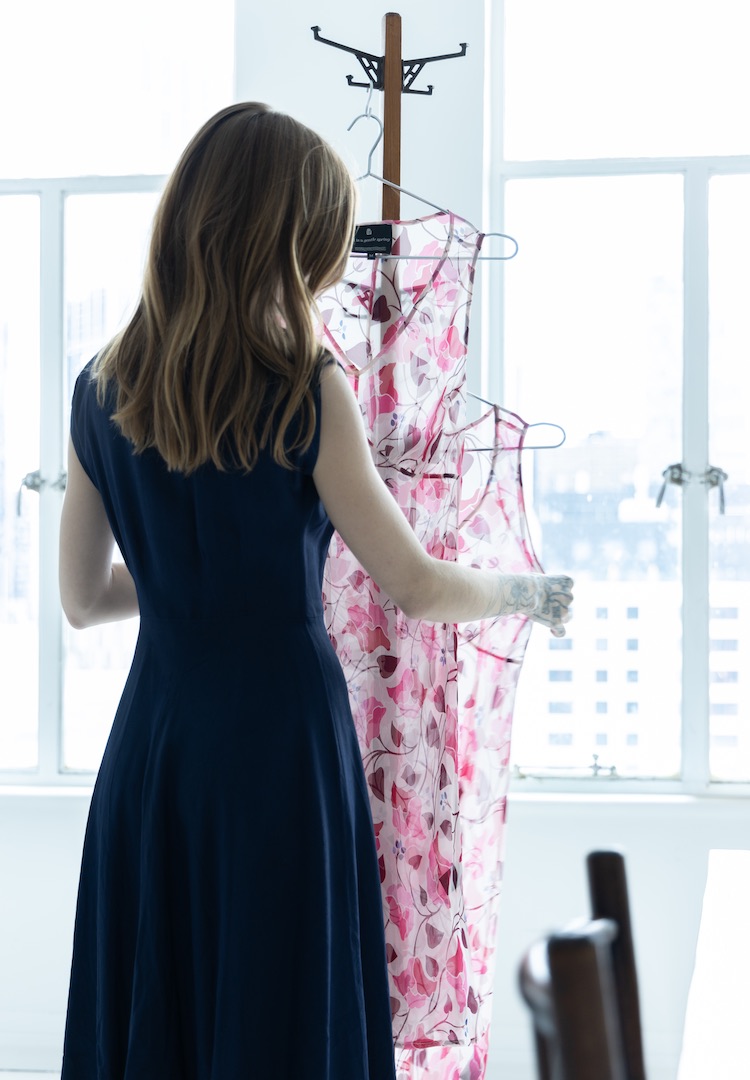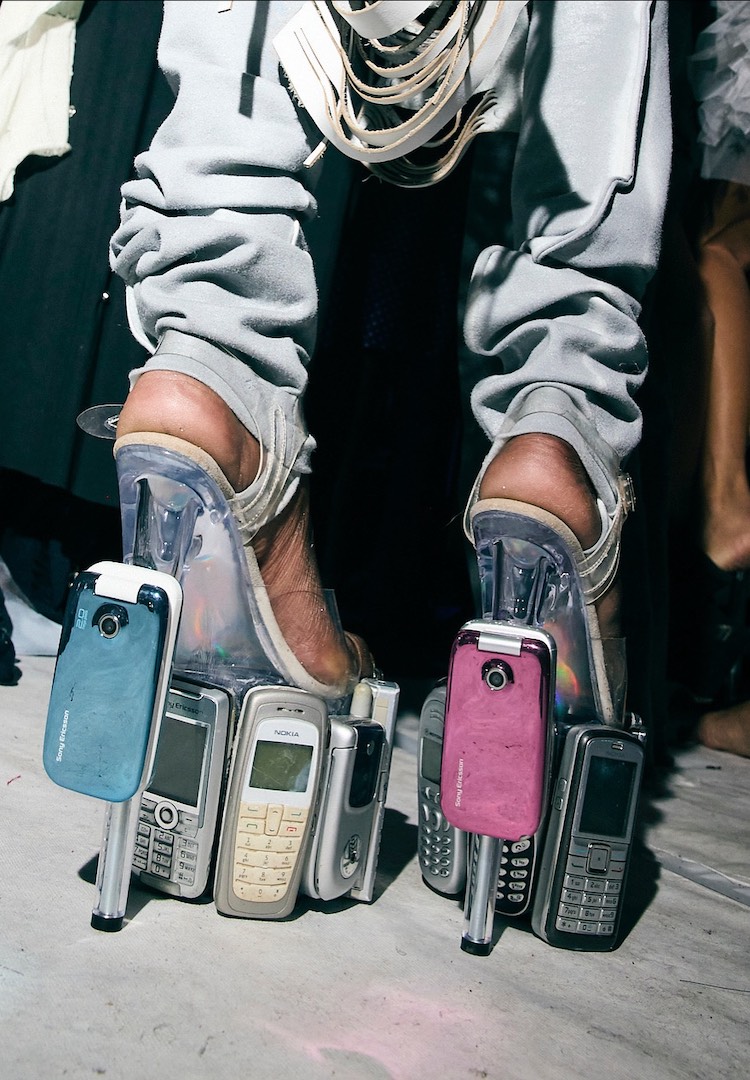What is size dysmorphia and how can I tell if it’s affecting how I dress?
words by Lauren Di Bartolo
“Your body will change and so will your size. That’s not a crisis, that’s life and it isn’t a call to fix or flatten anything.”
It’s important to note this article isn’t psychological advice. Instead, it’s a reflection on a shared experience – one you might recognise in a change room, a candid photo, or a quiet moment in front of the mirror.
It might catch you off guard. You reach for your favourite jeans, maybe it’s been a while, and they don’t fit. The zip won’t budge, the waistband is suddenly suffocating and you’re left thinking, ‘When did this happen?’. You didn’t feel different yesterday, you haven’t really changed your habits, but here you are, unsure whether the fabric has shrunk, the size shifted or your body somehow reconfigured itself without sending a calendar invite. This is where size dysmorphia lives. It’s a quiet moment of realisation that speaks to something deeper.
For more fashion news, shoots, articles and features, head to our Fashion section.
What is size dysmorphia?
Size dysmorphia is what happens when the way you perceive your body size doesn’t align with reality. It’s not the same as Body Dysmorphic Disorder (a clinical mental health condition) but it’s a psychological grey area many people experience, especially when our identity is anchored to a version of ourselves we’re no longer living in.
Think of it as the mental dissonance between “I’m a size 14” and “Why don’t any of these size 14 pants fit anymore?”. It can sneak in through social comparison, old photos, inconsistent sizing or those casual “I feel so bloated” conversations we all pretend are just small talk.
Often, conversations surrounding weight gain don’t always with a direct acknowledgement. They might begin with confusion over whether your favourite jeans have shrunk in the wash, or have you questioning whether a brand’s sizing is just all over the place. These are socially acceptable ways of processing change without actually confronting it. As Dr. Renee Engeln, author of Beauty Sick, says: “In Western culture, thinness is equated with control and success. So acknowledging weight gain can feel like confessing failure.” But weight gain isn’t failure, it’s just information. And often, it’s completely unremarkable, until the world (or your wardrobe) makes it feel otherwise.
Why we might not notice small changes
There’s actually a psychological reason for all of this. Your Reticular Activating System (RAS) filters what you pay attention to, so if you’ve told yourself for years, ‘I’m this size’, your brain will (genuinely) filter out conflicting information until something – a photo, a fit, a friend’s comment – forces a recalibration.
Then there’s attentional bias. You notice what you expect to see. If your life is full – work, relationships, stress, survival – you might not notice subtle shifts in your body because you’re simply not looking. Plus, there’s emotional memory. A certain weight might have symbolised happiness, confidence, or control, so it becomes the version of you that feels most real, even if it hasn’t been real for a while.
As a fashion stylist whose body has seen constant change (often radical and hormonal) for as long as I can remember, you might think this is a conversation I would constantly have with clients. Yet it’s not typically the kind of conversation people feel comfortable having.
Let’s talk about fashion’s role in all of this
Fashion isn’t innocent here. The fashion industry has done its part to confuse us. Sizes vary wildly between brands and one label’s size 12 can be another’s size eight. Add in vanity sizing and marketing that celebrates one kind of body, and no one’s surprised anymore. No wonder we struggle to reconcile how we feel with how we look.
As a fashion stylist, I see this disconnect constantly: clients who won’t try a larger size out of fear, people holding onto clothes for a body they don’t have anymore, wardrobes full of items that don’t support the lives they actually live. I often tell my clients, “We’ve been conditioned to treat our size as static, even when our lives and bodies are anything but.” Your clothes are meant to fit you, but we’ve been taught to believe we should shrink, stretch or suffer to fit them.
When size dysmorphia creeps in, your relationship with clothing changes. You might stop dressing in ways that feel expressive or might avoid shopping altogether, feeling like nothing ‘looks right’ but can’t explain why. Sometimes, we dress for the body we used to have, or the one we think we should have, instead of the one that’s here now. Style becomes less about self-expression and more about damage control.
So, what do we do with this?
Let’s start by normalising the shift. Your body will change and so will your size. That’s not a crisis, that’s life, and it isn’t a call to fix or flatten anything. It’s an invitation to notice and to get dressed with more intention.
My first piece of advice is to let go of labels. When shopping or styling, focus on how something feels and fits, not what the tag says. As your stylist, I’d recommend you experiment with silhouettes that prioritise shape over a number. Style is about line, proportion and of course, expression.
I’d also suggest auditing your wardrobe, not as a way to punish yourself but to remove the friction. When you do, speak neutrally about your body. Not everything needs a label or explanation. Keep pieces that make you feel good now.
And when you’re building your wardrobe, dress for the body you have today. Not the one you had at 21, or in lockdown, or that one summer you did Pilates religiously. Give yourself permission to change. You’re allowed to evolve and your wardrobe is allowed to evolve with you.
Stop treating size as status and remember, confidence doesn’t come from being a smaller size. It comes from not attaching your worth to a number at all. And if the way you feel about your body is affecting your mental health, talking to a psychologist can be a powerful and productive next step.
Lauren Di Bartolo is a fashion stylist and human behaviour expert based in Melbourne. An industry innovator and founder of Australian Style Institute, she has spent decades observing the relationship between people and their clothes. She’s a regular contributor to Fashion Journal, answering our burning style questions in her fortnightly column.
To learn more about the Australian Style Institute, head here.


